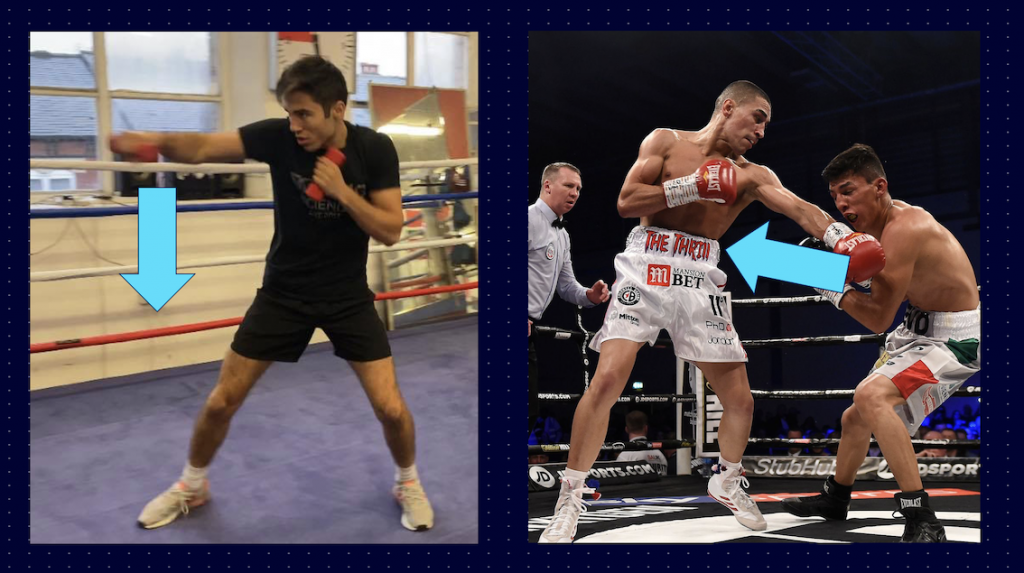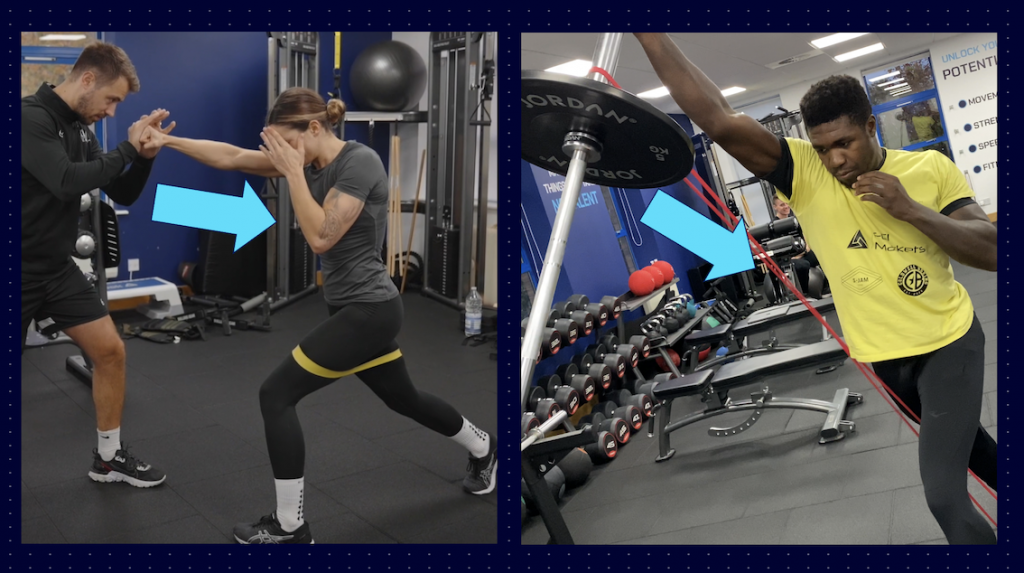Shadow Boxing with Weights
Shadow Boxing with weights… Yes or No?
This is a question we commonly receive at Boxing Science, and it’s not a straight forward yes or no answer.
Shadow boxing with weights has its benefits and limitations. In this article, Strength and Conditioning coach Danny Wilson shares the reasons why you should perform shadow boxing with weights, and how best to perform this.
This article will cover…
- The Benefits of Shadow Boxing with Weights
- How not to perform Shadow Boxing with Weights
- How best to perform Shadow Boxing with Weights
Should boxers shadow box with weights?
The answer is Yes… but in a particular setting.
A lot of strength and conditioning coaches are against weighted shadow boxing as a tool to get stronger as the biomechanics and loading does not transfer to a punch. We’ll get onto that in a short while.
This can be beneficial when performed in technical Boxing sessions as holding lighter weights will encourage athletes to slow down their punches and focus on technique. When performing shadow boxing, some boxers can be guilty of throwing shots as fast as possible, losing technique and even losing the grip of their fist.
The dumbbells will restrict boxers from moving too fast or opening the hand during shadow boxing.
At Sheffield City ABC, we get boxers to perform a round of weighted shadow boxing with light dumbbells during the warm-up.
How much weight should I use for shadow boxing?
We would advise to use 0.5 kg – 2 kg dumbbells when shadow boxing.
Keeping the dumbbells this light will still make sure technique and speed is maintained during shadow boxing.
We would not advise to perform any heavier as this would impact punching technique.
Can this shadow boxing with weights increase my punch power?
We would not advise to use this as a method to punch power. The main reason is that there is insufficient loading to overload the muscles to increase RFD (see Science Behind the Punch).
Furthermore, the weight that the punch arm will have to resist is vertical. Whereas the forces that boxers have to resist during impact of punches are mostly horizontal (during straight punches). This is demonstrated in the image below.

Furthermore, this loading means that weighted shadow boxing only targets the upper-body, predominately the anterior deltoid and pectoralis major.
We know that punching is a whole body action that requires rapid and effective kinetic chain sequencing to transfer force from foot to fist. Therefore, we need to incorporate punch specific exercises that overload the lower-body and trunk during a punching action. Below is a picture of how these exercises have more appropriate loading angles.

How not to perform?!
You should be cautious in the weight load selected. Heavier dumbbells will effect the punching technique as well as increasing the muscular activation of the anterior shoulder muscles.
Is this a good upper-body conditioning tool?
We often get asked this question, along with “How to improve upper-body conditioning?” and “What are the best exercises for shoulder endurance?”
The main way to improve muscular endurance is by improving general strength and fitness. We target fitness by conditioning the whole body with high-intensity running, circuits and air bike.
We do use upper body conditioning exercises during circuits and when adapting around injuries.
However, we would not use this as an upper body conditioning tool as the low weight load used would not be sufficient to overload the muscle to promote physiological adaptations. We would use fast bursts of shadow boxing to target upper-body conditioning by increasing the speed and intensity of the muscle action to create a physiological response.
We use this as part of our ‘Red Zone Circuits’, check out the video below or our e-book here.
Summary
DO’S
Shadow boxing whilst holding light weights can be beneficial for slowing down the punching action to focus on optimal punching technique.
This should be performed with 0.5 kg – 2 kg dumbbells.
Perform 1-2 x 3 minute rounds during warm-ups for Boxing sessions.
Boxers should opt for a range of punch specific exercises that can overload the lower-body and trunk during a punching action.
DON’TS
Boxers should avoid performing weighted shadow boxing to target strength or upper-body conditioning adaptations.
Boxers should not perform with dumbbells over 2 kg.
Boxers should not use weighted shadow boxing as a means of increasing punch power.
